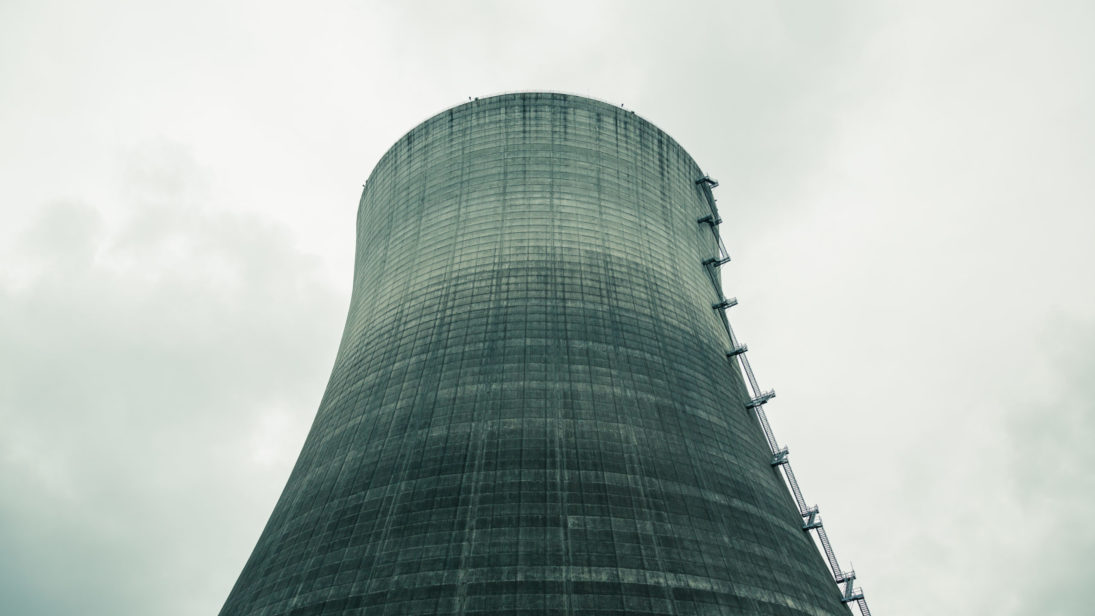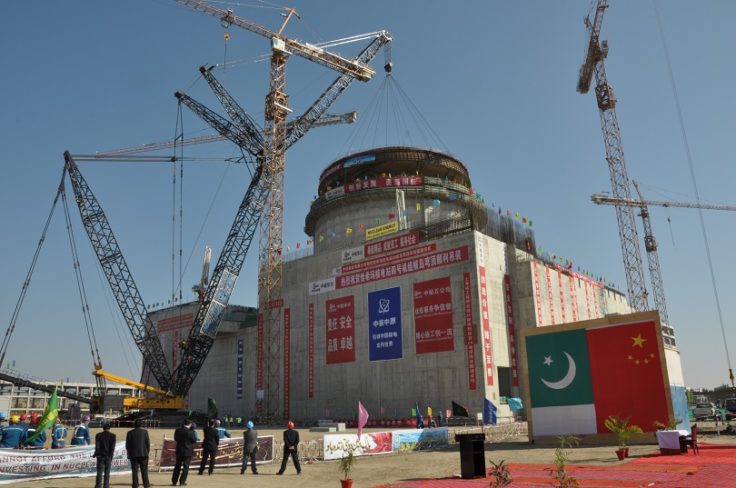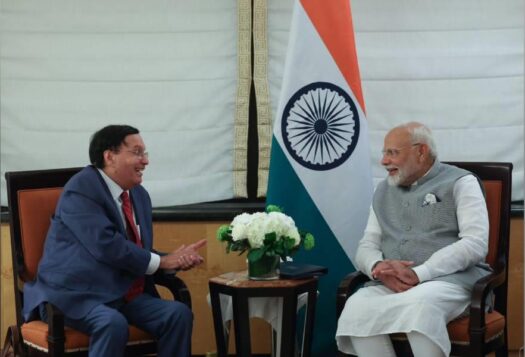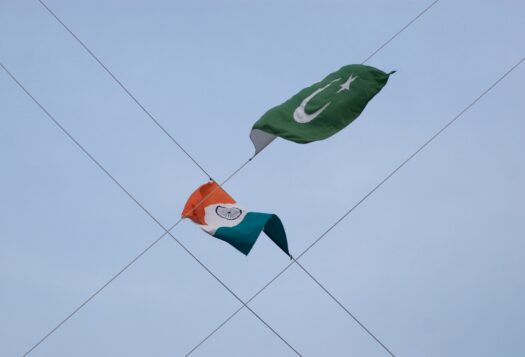
Pakistan’s looming economic crisis has only been worsened by an energy shortfall. Due to a lack of capacity in Pakistan’s electrical grid and the inefficient use of the available energy, Pakistan lost an average of USD $9.38 million per year in economic production from 2012 to 2017. Most of Pakistan’s current electricity generation is reliant on oil and natural gas, which has led Pakistan to become heavily dependent on energy imports.
At a time when Pakistan is looking to reduce its dependence on these types of fossil fuels, nuclear energy—in addition to hydropower and other renewables—provides Pakistan with a clean, alternative energy source. Currently nuclear energy accounts for just 6.81 percent of Pakistan’s total energy mix (the combination of energy resources used for power generation), contributing 1,318 megawatts of electricity to the national grid. Pakistan seeks to resolve its energy crisis through collaboration with China, which has been Pakistan’s historical partner in civil nuclear energy.
China-Pakistan Cooperation: History and Motives
China’s assistance in Pakistan’s civil nuclear energy program began in earnest in the late 1970s. … While Islamabad sought assistance to build its fledgling nuclear energy program to address the nationwide electricity shortages, Beijing desired to cultivate Pakistan as a strategic partner in South Asia as part of its regional balance of power strategy vis-à-vis India.
Pakistan’s nuclear energy program started in 1954, largely inspired by the then U.S. President Dwight Eisenhower’s “Atoms for Peace” speech in December 1953, in which he emphasized promoting peaceful uses of nuclear energy in the field of agriculture, medicine, and electricity generation. By 1959, the Pakistan Atomic Energy Commission (PAEC) had signed an agreement with Canadian General Electric Company for the construction of a 137 megawatt electrical (MWe) nuclear reactor in Karachi. The Karachi Nuclear Power Plant-1 (KANUPP-1 or K-1) started commercial operations in 1972 under International Atomic Energy Agency (IAEA) facility specific safeguards.
However, after India’s “peaceful nuclear explosion” in 1974, using plutonium from a Canadian-supplied CIRUS reactor, Canada began only selling nuclear technology to nations that had signed the Nuclear Non-Proliferation Treaty (NPT) or accepted full-scope safeguards—safeguards which allow the IAEA to inspect both civil and military nuclear facilities. After, India refused to meet these conditions, Pakistan also followed the suit, which led Canada to terminate its nuclear energy cooperation with New Delhi and Islamabad in 1976.
China’s assistance in Pakistan’s civil nuclear energy program began in earnest in the late 1970s. Originating in the strategic cooperation that began between the two countries in the 1960s, civil nuclear energy cooperation was driven by economic and geostrategic factors. While Islamabad sought assistance to build its fledgling nuclear energy program to address the nationwide electricity shortages, Beijing desired to cultivate Pakistan as a strategic partner in South Asia as part of its regional balance of power strategy vis-à-vis India.
Since the two countries began cooperating on civil nuclear energy, China has played a significant role in helping Pakistan develop its nuclear energy technology, by assisting the latter in the construction of nuclear power plants. In September 1986, China and Pakistan signed an agreement to facilitate the transfer of civil nuclear technology. Under the deal, China agreed to provide Pakistan with power reactors and a variety of nuclear related products and services, such as research and technical support for uranium enrichment. Not only has this agreement played an important role in Pakistan’s economic development by enhancing industrial and technological capacity, but it has also helped to bridge the gap between Pakistan’s energy requirements and availability.
Following the 1986 deal, China agreed in 1991 to supply Pakistan with its indigenously developed Qinshan-1 nuclear power plant. Construction on Chashma Nuclear Power Plant-1 (CHASNUPP-1 or C-1) began in 1993, and the 300 MWe reactor became operational in May 2000. In 2005, Pakistan announced that it would begin constructing second 300 MWe power plant at Chashma, C-2, which went critical in 2011.
To further reduce the gap in supply and demand chain of energy, the China National Nuclear Corporation (CNNC) and PAEC agreed to build two more nuclear reactors at the Chashma site. The two new reactors, C-3 and C-4, have a net capacity of 315 MWe and have been functional since 2016 and 2017, respectively. Some analysts have argued that this expansion of China-Pakistan nuclear cooperation, which led to the construction on C-3 and C-4, was in response to the 2008 U.S.–India civil nuclear agreement. As a result of the U.S.–India nuclear deal, the Nuclear Suppliers Group (NSG) issued an India-specific waiver for the transfer of civilian nuclear technology. In this context, Pakistan was critical of the deal, arguing that the exclusive waiver was discriminatory and destabilizing for South Asia. Pakistan, believing that it has enforced high level of legislative and regulatory frameworks and institutional mechanisms for nuclear safety and security, also sought international cooperation in its civil nuclear energy program. To Islamabad, the two new reactors were a way for Pakistan to fulfill its energy needs.
In 2013, China-Pakistan announced the construction of two more nuclear power plants at Karachi—Karachi Nuclear Power Plant-2 (K-2) and Karachi Nuclear Power Plant-3 (K-3)—each with a net capacity of 1,014 MWe. Construction of both units (K-2 and K-3) is ongoing, but the two units are scheduled to be operational by 2020 and 2021, respectively. The current energy capacity of the five operational nuclear power plants (K-1, C-1, C-2, C-3, and C-4) is 1,318 MWe. With the addition of K-2 and K-3, it is expected that Pakistan will be producing 3,346 MWe of nuclear energy by 2022.

Debate over NSG Trade Guidelines
The NSG comprises forty eight participating governments that regulate nuclear and nuclear-related exports to ensure the adherence to the principle of non-proliferation laid out by the NPT. As such, the group requires that for a state to be sold nuclear technology by a member of the NSG, the nation must be a party to the NPT and place its nuclear activities under full-scope safeguards. China joined the NSG in 2004 and Pakistan desires to become an NSG member.
The NSG agrees that China’s supply of the C-1 and C-2 nuclear reactors to Pakistan before China joined the NSG is not subject to the NSG’s trade guidelines. However, according to some accounts, a few NSG members have raised concerns over China’s cooperation with Pakistan in constructing additional reactors. Therefore, the announcement that China would supply Pakistan with two additional reactors in 2010 and two more in 2013, led some members of the NSG to argue that China was violating the NSG’s trade guidelines by continuing to sell nuclear reactors to Pakistan. The NSG’s argument rests on two factors. One, China reportedly did not detail any additional commitments to sell more reactors to Pakistan when it first joined the NSG in 2004. And second, a new clarification in the NSG’s rules in 2006 required all member states to provide documented evidence for future claims under the grandfathered clause. Since this change, it is maintained by some NSG participating states that China has not provided the NSG with documented evidence on why the new reactors should be grandfathered in.
The announcement that China would supply Pakistan with two additional reactors in 2010 and two more in 2013, led some members of the NSG to argue that China was violating the NSG’s trade guidelines by continuing to sell nuclear reactors to Pakistan. … China and Pakistan argue that the latest units at Chashma and Karachi are “grandfathered” in by the previous nuclear agreement, remain under IAEA safeguards, and therefore are not contrary to the NSG rules and regulations.
China and Pakistan have maintained that the new nuclear reactors are an extension of the nuclear agreement signed in 1986 before China’s adherence to the NSG. The two nations argue that the latest units at Chashma and Karachi are grandfathered in by the previous nuclear agreement, remain under IAEA safeguards, and therefore are not contrary to the NSG rules and regulations. With respect to additional commitments, China stated in 2011 that while giving documented evidence as to the grandfathered nature of the new reactors in 2004, it had informed the IAEA under the Additional Protocol about its future civil nuclear cooperation with Pakistan. By taking such legal measures, China and Pakistan argue that the new reactors do not violate non-proliferation obligations, since the new reactors are under facility specific IAEA safeguards and only intended for civilian use.
The Future of Cooperation
In a continuing effort to overcome the growing energy crisis and consequent economic woes, Pakistan is seeking to increase the contribution of nuclear energy and other renewable energy sources to its total energy mix. By 2030, Pakistan aims to generate 8,800 MWe from nuclear energy, which would have nuclear energy account for 20 percent of Pakistan’s total energy. In order to achieve this, China and Pakistan agreed in November 2017 build a fifth nuclear power plant at Chashma (C-5). Although construction has yet to begin on C-5, the new reactor is anticipated to add an additional 1,000 megawatts of electricity to the national grid upon completion. Despite nuclear energy currently making up a small portion of Pakistan’s total energy mix, expanding Pakistan’s nuclear energy generation capacity and pairing it with other renewable sources of energy could not only help Pakistan alleviate its energy crisis but also will produce a positive impact on the climate.
***
Image 1: Tony Webster via Flickr
Image 2: Pakistan Atomic Energy Commission


